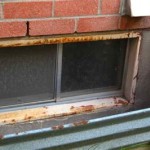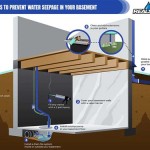How to Insulate a Basement Ceiling: A Comprehensive Guide
Insulating your basement ceiling can significantly improve your home's energy efficiency and comfort. It reduces heat loss during winter and prevents warm air from escaping during summer. However, it's important to follow proper techniques and choose the right materials to achieve optimal results.
Materials Required:
- Insulation (fiberglass batts, rigid foam boards, cellulose)
- Insulation hangers or wire
- Vapor barrier (polyethylene sheeting or aluminum foil)
- Caulk
- Safety glasses
- Respirator
Step-by-Step Instructions:
1. Safety Precautions: Wear safety glasses and a respirator when handling insulation and vapor barriers.
2. Install Hangers or Wire: Determine the spacing of hangers or wire based on the insulation type and thickness. Secure them perpendicular to the ceiling joists.
3. Install Vapor Barrier: Staple or tape a vapor barrier to the bottom of the ceiling joists, ensuring it overlaps at the seams. Trim excess material.
4. Install Insulation: Place the insulation between the joists, fitting it snugly but not compressing it. Avoid gaps or voids. Install in multiple layers if desired.
5. Seal Gaps: Fill any gaps or holes around pipes, wires, and electrical outlets with caulk to prevent air leaks.
6. Tape Vapor Barrier Seams: Seal the seams of the vapor barrier with aluminum tape to create a continuous barrier.
7. Install Drywall or Paneling: Optional but recommended to finish the ceiling with drywall or paneling for a neat appearance and added soundproofing.
Types of Insulation:
Fiberglass Batts: Affordable and easy to install, but less effective at blocking sound than other materials.
Rigid Foam Boards: More expensive but provide excellent insulation and soundproofing. Available in various thicknesses.
Cellulose: Made from recycled paper, cellulose is fire-resistant and has good soundproofing qualities.
Tips:
- Choose insulation with an R-value appropriate for your climate.
- Wear gloves when handling insulation to minimize skin irritation.
- If the basement ceiling is high, consider using a step stool or scaffolding for safety.
- Insulate all exposed pipes and ducts to reduce heat loss.
- Regularly check the insulation for damage or deterioration and make repairs when necessary.
Benefits of Insulating a Basement Ceiling:
- Reduced energy bills
- Improved comfort year-round
- Increased soundproofing
- Reduced moisture levels
- Increased home value
Conclusion:
Insulating a basement ceiling is a worthwhile investment that can significantly improve your home's comfort and energy efficiency. By following these steps and choosing the right materials, you can create a warm, dry, and quiet basement space that you'll enjoy for years to come.

Should I Insulate My Basement Ceiling And Walls Aire Serv

Ceiling Insulation In Your Basement

Best Insulation For Soundproofing Your Ceiling Renoviso

What Is Basement Ceiling Insulation And It Worth

What Are The Pros And Cons Of Basement Ceiling Insulation Upgradedhome Com

How To Insulate Your Basement 2 10 Home Buyers Warranty

Basement Insulation Upstate Spray Foam

Basement Insulation Jm Of New Bedford

Basement Insulation Problems 4 Things That Can Cause You Troubles

Basement Ceiling Insulation Interior Inspections Internachi Forum
See Also








